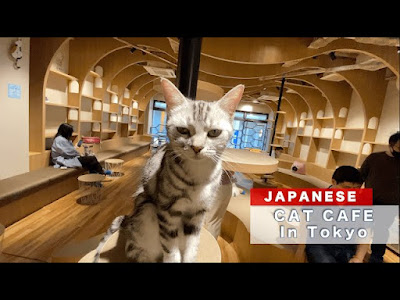Konichiwa Japan!
Known for its cherry blossoms and Mount Fuji, Japan is also well known for its cutting-edge technology such as Japanese cars and bullet trains, vending machines, cultural values like politeness, punctuality and mouth-watering food such as Ramen and Sushi. A visit to this country is truly a delight, but it is even more important to a person who follows Nichiren Buddhism.
Known to be the home town of the Buddhist priest, Nichiren Shonin who was the founder of the Nichiren sect of Buddhism, Japan is the headquarters of the Soka Gakkai International (the Japanese Buddhist religious movement). Japan is home to over 100,000 Shinto shrines and 80,000 Buddhist temples. Buddhism is the dominant religion in Japan with Senso-ji being the most famous Buddhist temple that is located in Asakusa, Japan.
Although there are many schools of Buddhism such as Mahayana, Theravada and Vajrayana it is the Mahayana branch of Buddhism which is the most popular form of Buddhist practice throughout Japan. A lot less structured than Theravada Buddhism, Mahayana Buddhism is very popular across the world. Nichiren Buddhism is a branch of Mahayana Buddhism which began in medieval Japan in the 13th century.
After following Nichiren Buddhism for approximately 4 1/2 years I was given the opportunity to travel with two other senior members of the practice to Japan and visit three key cities - Tokyo, Kyoto and Osaka!
My trip to Japan was scheduled to last between 30th May 2018 to 7th June 2018 – a total of nine days, our days were packed with many places to visit. We stayed at Hotel Shinjuku in Tokyo. From there we commuted everywhere, either by foot or by the bullet train. (involving a lot of changing of multiple trains!)

While there, we visited many Soka-Gakkai buildings such as the office of the Seikyo- Shimbun (the Soka-Gakkai newspaper). Here, you could get a strong aura of the influence of Soka Gakkai all around. In fact, Shinanomachi is also known as the Gakkai village, Soka Kingdom or even the Soka Gakkai Town.
We even had the privilege of being able to visit Sensei’s house!
The Great Hall of Kosen Rufo (Daisedo) in Tokyo was one of the first places we visited and we attended a Gongyo ceremony followed by intense and resounding Daimoku there. It is officially known as the 'Hall of the Great Vow for Kosen Rufu'.
The hall has eight columns along the facade of the hall which symbolise the eight Chinese characters from the Lotus Sutra that read, 'You should rise and greet him from afar, showing him the same respect as a Buddha.'
Some of the other places we visited include Soka University. The Tokyo Makiguchi Memorial Hall- a symbol for the life of the first Soka Gakkai President Tsunesaboro Makiguchi, the Kyoto International Cultural Center, Ikeda Kansai Center in Osaka; Soka Gakkai World Youth Center (from the outside) and the Min-un Culture Center, which was started by Daisaku Ikeda. I even wrote a letter to Sensei (which was something that I had not planned to do)!!
Every day, we had to wake up very early, but our entire day was spent visiting different SGI buildings. When we were in Tokyo, we visited a very small town that was right in the centre of Tokyo known as Shinanomachi.
Known to be a district of Shinjuku – Tokyo, Japan there were many tall buildings surrounding us with brightly lit signs. Some of the best places to visit in Shinjuku are Kabukicho – the biggest red light district in Tokyo, the 10 billion worth restaurant known as the Robot Restaurant, the Tokyo Kabukicho Tower, the popular bar known as the Golden Gai, the narrow and rustic alley packed with many small Japanese Izakaya pubs – Omoide Yokocho, the bar hopping tour known as Izakaya hopping, the Tokyo Metropolitan Government buildings, the Shinjuku Gyoen – a popular park, the popular hotel – Book and Bed Tokyo Shinjuku, any of the restaurants known for the popular dish Ramen, the Yayoi Kusama Museum, the Park Hyatt Tokyo, go shopping for sneakers, the Shinjuku Southern Terrace and many other popular places.
We also visited the Kanagawa Bunka Kaikan (Culture Centre) in Kanagawa (in Yokohama City) where you can see the Pacific Ocean. Each visit to any building was accompanied by intense Gongyo and Daimoku. In fact, Kanagawa is the birthplace of the peace movement in the Soka Gakkai and it is also where Nichiren Daishonin made tremendous efforts for Kosen Rufu (In Kamakura).
Although the trip was 9 days long, on a very personal note my faith started to deepen. I realised that my prayers were too self-centred and I was not contributing enough to kosen rufu, which is the essence and backbone of Buddhism –our practice; and the only way I could possibly hope to eradicate my problems was to build my happiness through the happiness of others.
When I came back from the trip, I felt extremely re-energised and hopeful that this positive life condition is going to be a progressive move forward in my life and that's brought about a huge difference for me.
One of the most interesting aspects of visiting Japan was that I was even able to visit a cat café (Neko café)! Here I was able to play with the cat café’s resident cats!










You are making great causes by telling everyone about nichren diashonins Buddhism which is really the Buddhism for the present age … a practical logical and easy way to live by the ideals of Buddhism
ReplyDelete